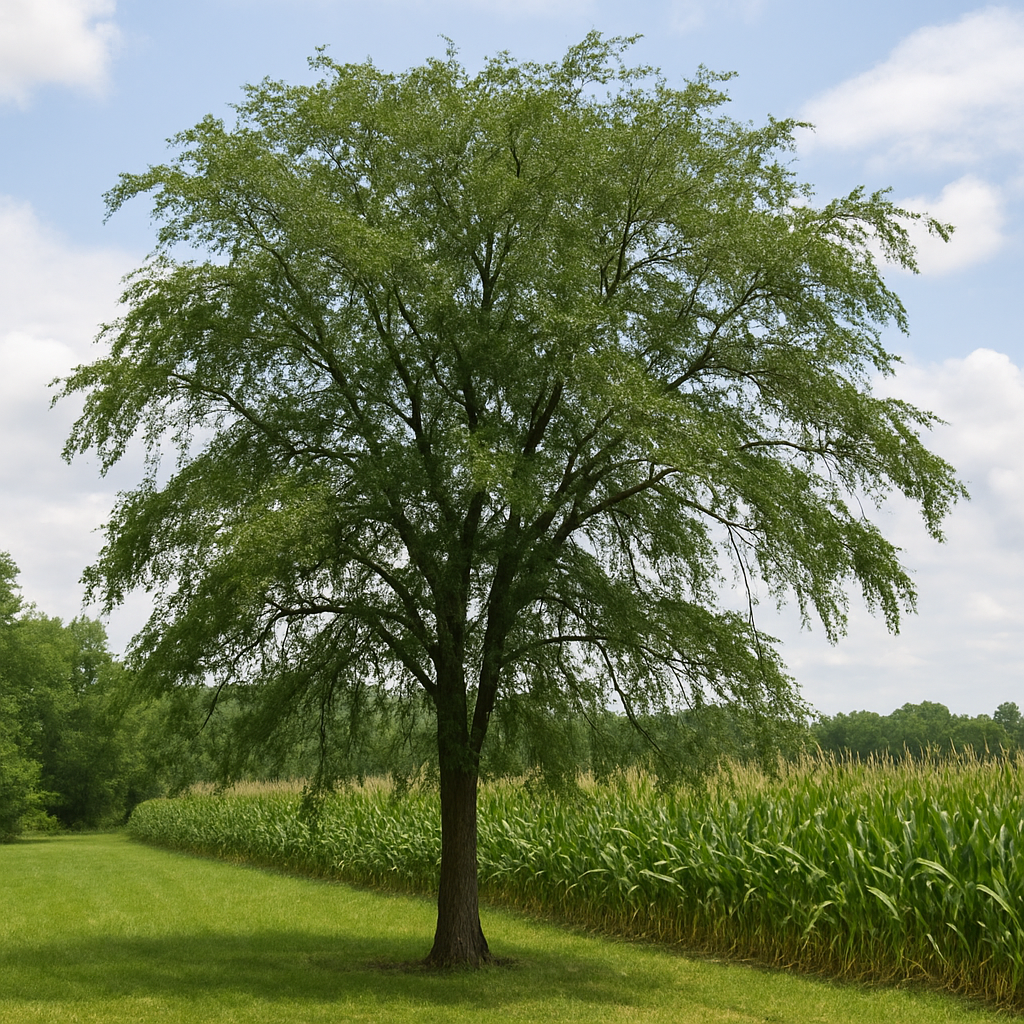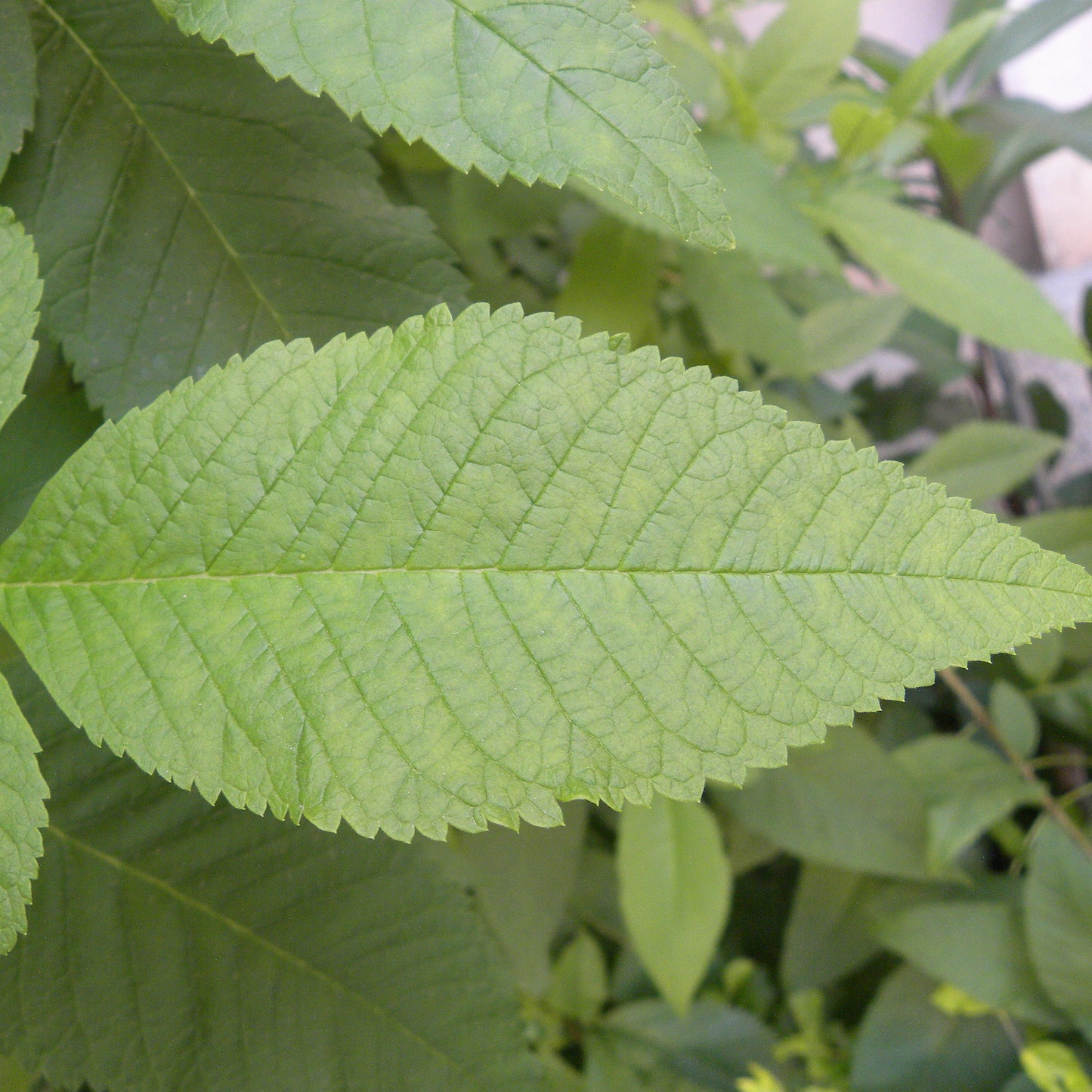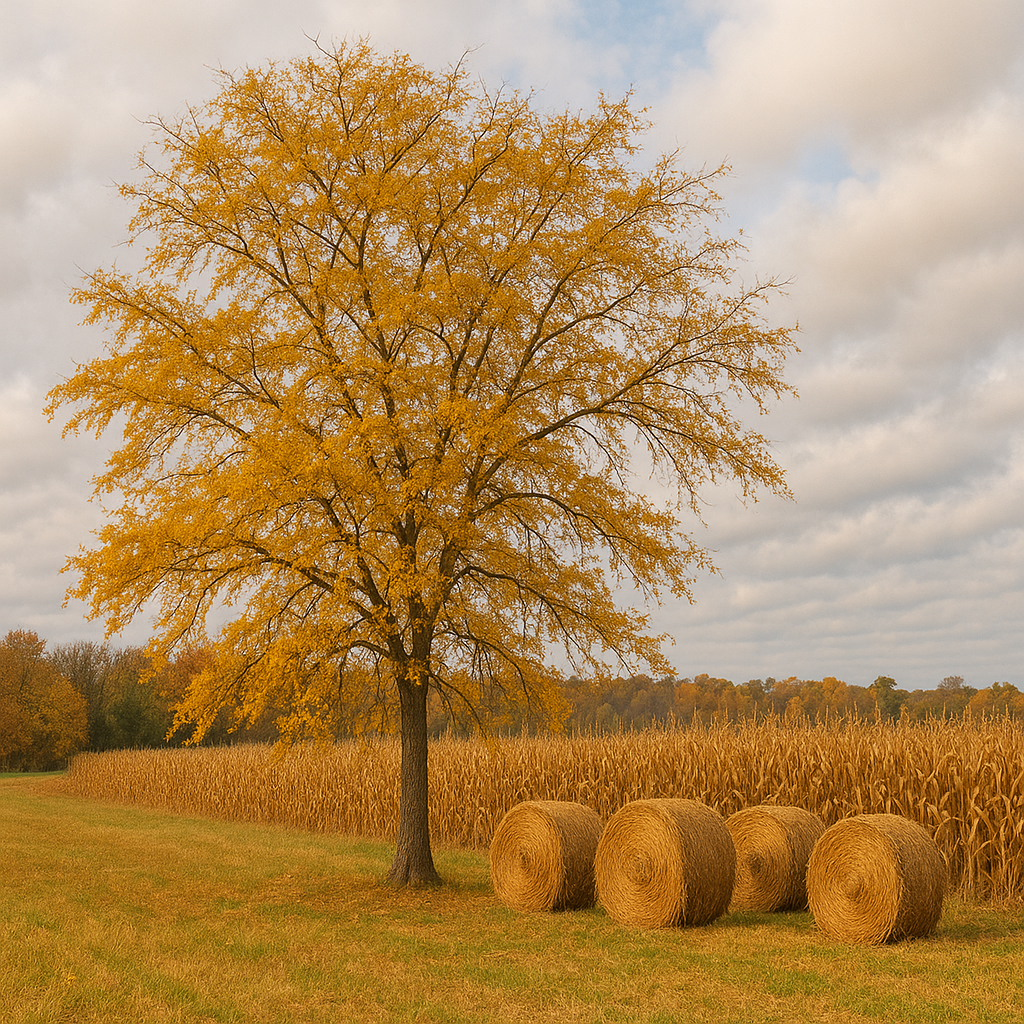Limited Quantities - Reserve Now For Fall
Slippery Elm Tree
Slippery Elm Tree
Couldn't load pickup availability
Ulmus rubra
Slippery Elm Tree
The Slippery Elm Tree is a native North American hardwood known for its dark green serrated leaves, upright form, and valuable inner bark. Often found in bottomlands and moist upland forests, this hardy tree plays a key role in supporting wildlife, soil health, and traditional medicine. It is named for the mucilaginous texture of its inner bark, which has long been used for herbal remedies.
Perfect for restoration projects, windbreaks, and large native landscapes, the Slippery Elm is adaptable, resilient, and deeply rooted in American ecological and cultural history.
Slippery Elm Tree Overview
| Attribute | Details |
|---|---|
| 🌿 Botanical Name | Ulmus rubra |
| 🏷️ Common Names | Slippery Elm, Red Elm |
| 🌳 Mature Height | 40–70 feet |
| 🌐 Mature Width | 30–50 feet |
| 📈 Growth Rate | Moderate (1–2 feet per year) |
| ⏳ Lifespan | 80–150 years |
| 🧊 USDA Zones | 3–9 |
| ☀️ Sun Preference | Full sun to partial shade (best growth in full sun) |
| 🧱 Soil Type | Moist, well-drained loam or clay; tolerates periodic flooding |
| ⚖️ Soil pH | Slightly acidic to neutral (5.5–7.0) |
| 💧 Water Needs | Moderate; prefers consistent moisture |
| 🍂 Foliage Color | Dark green in summer; yellow in fall |
| 🌸 Flower Color | Small, reddish-green; not showy |
| 🐝 Pollination | Wind-pollinated; blooms appear before leaves in early spring |
| 🌿 Growth Habit | Upright, open-branched with oval crown |
| ↔️ Spacing | 30–50 ft apart for shade or windbreak planting |
| 🏡 Landscape Uses | Windbreaks, native woodlands, restoration sites, large properties |
| 🧹 Maintenance Level | Low to moderate |
Environmental Benefits
🌿 Provides erosion control and slope stabilization
🪶 Supports wildlife with shade, nesting habitat, and shelter
🌱 Improves soil quality and native plant biodiversity
🌎 Plays a role in ecological restoration and forest regeneration
Pros & Cons
| ✅ Pros | ⚠️ Cons |
|---|---|
| 🌳 Adaptable native tree with strong environmental benefits | 🐛 Susceptible to Dutch elm disease, especially in older trees |
| 🍃 Provides broad shade and improves habitat diversity | ✂️ Requires pruning for structure and airflow when young |
| 🧬 Historically used for medicinal purposes and inner bark | 🌿 Not suitable for small landscape spaces |
| 💧 Tolerates moist soils and floodplain planting | ❄️ Fall color is modest compared to ornamental varieties |
| 🏞️ Ideal for large-scale plantings and restoration zones | 🌱 Slower to establish in dry or sandy soils without irrigation |
Planting & Care Guide
🛁 Water deeply after planting and continue weekly during the first year
🕳️ Dig a wide hole to accommodate deep roots; plant at original soil depth
🌾 Apply 2–4 inches of mulch to conserve moisture and suppress weeds
💦 Maintain consistent watering during dry periods for young trees
✂️ Prune in late winter to promote strong branch structure and disease resistance
🧪 Fertilize in spring only if soil is poor; prefers naturally rich soils
The Slippery Elm Tree is a resilient native hardwood that provides shade, shelter, and historical value to any large landscape. Whether used for wildlife corridors, windbreaks, or forest restoration, this tree offers long-term ecological benefits and a deep-rooted connection to the natural heritage of North America.
Share






